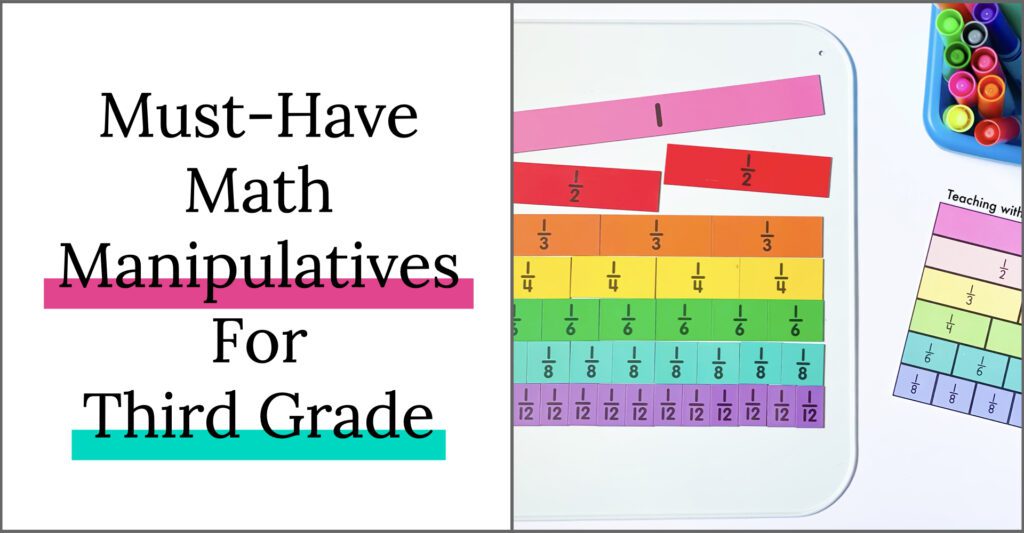
You all know I live for math manipulatives. And today I’m here to share my five favorite, must-have math manipulatives for third grade!
Our students are never too old for manipulatives, and third graders are no exception. In my early teaching days, I struggled to meet the needs of all my students in math. Worries about supporting each of the mathematicians in my class kept me up at night! I’ve talked with so many other third grade educators who felt pressured to be “done with” manipulatives before their students were ready, worried about failing behind the pace of their district’s pacing guide.
But here is the trick. Once I incorporated these five third grade math manipulatives into my guided math, my students caught onto new concepts more quickly and more deeply. We managed to make our way through everything there was to teach. And, my students stayed actively engaged throughout my centers!
Don’t let my early mistakes become yours! To save you time and stress, I’ve compiled a list of my five favorite MUST-HAVE math manipulatives for third grade below. I can’t wait to share these with you!
You can click on any of the pink headings below for an Amazon affiliate link, where you can find a direct link to the specific manipulative I use in my classroom. If you happen to order one of the manipulatives from the link provided, I earn a small percentage of that sale, which goes towards the maintenance of my blog.
Clocks
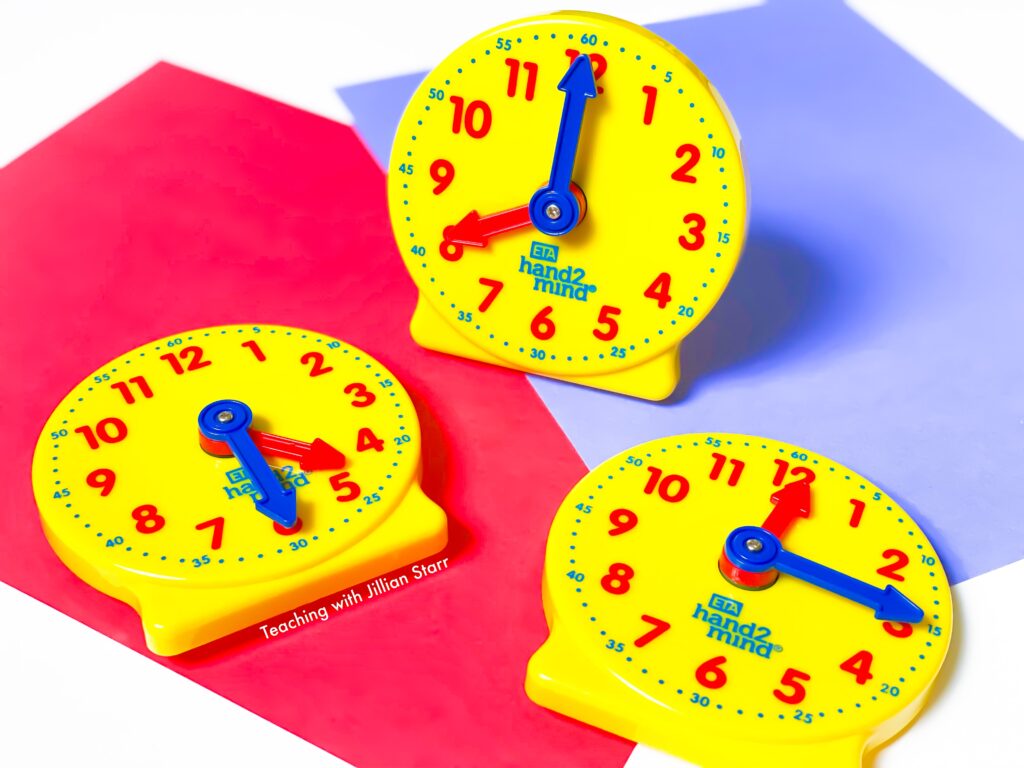
Teaching about time is essential to most third grade math curricula. When I first taught time, I thought drawing a big hand and a little hand on my easel would help my students grow their concept of time.
I’ll admit, I was wrong. I needed something that could help students see the connection between minutes and hours. That is when I stumbled across clocks with gears. Students can visually see the connection of minutes passing to hours passing.
Clocks are the best (and maybe only) third grade math manipulative that can actually help students develop a strong, concrete understanding of elapsed time.
In whole or small groups, I demonstrate with a large clock. Then, I hand out small geared clocks for students. As they work at their centers, telling time to the nearest minute and measuring time intervals in minutes, they can wind the clocks to see what those intervals look like.
Color Tiles
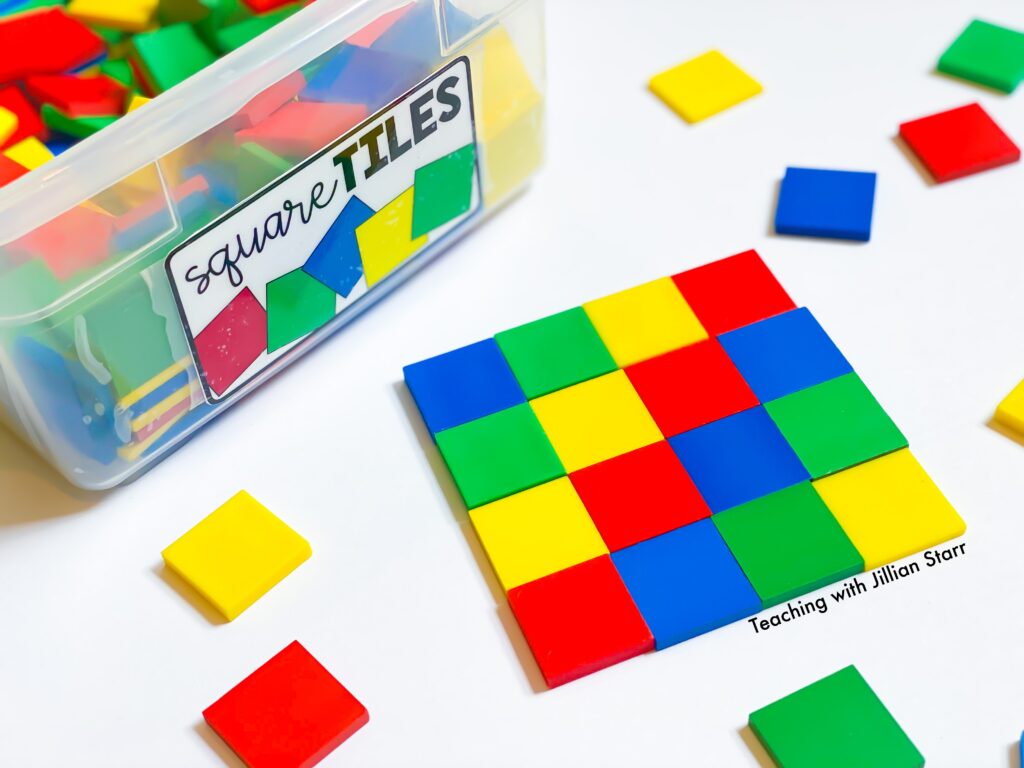
Color tiles are a gift to 3rd grade learners and definitely one of the best math manipulatives for third grade out there.
When I taught 3rd grade, I used color tiles for several major concepts: arrays, multiplication, division, measurement as well as area and perimeter. They were my go-to! Their shape and size are ideal for building squares and rectangles on the floor or on desks. Students can see that 3 rows of 3 tiles is a total of 9 tiles.
I don’t know about you, but I find that understanding the connection between multiplication and division is tricky. Color tiles are here to help! I love showing how you can build arrays and then separate the array into groups– (also known as division!). For area and perimeter, students can easily see 1-1 correspondence between each square and length of a side.
Color tiles are also an excellent third grade math manipulative for learning about measurement. Since they are 1 inch by 1 inch, they are easily used to measure anything using a standard measurement system. Students can line them up against or along anything and figure out the length, even if it is beyond 12 inches in length! They can also be great for introducing square units and area.
Base Ten Blocks
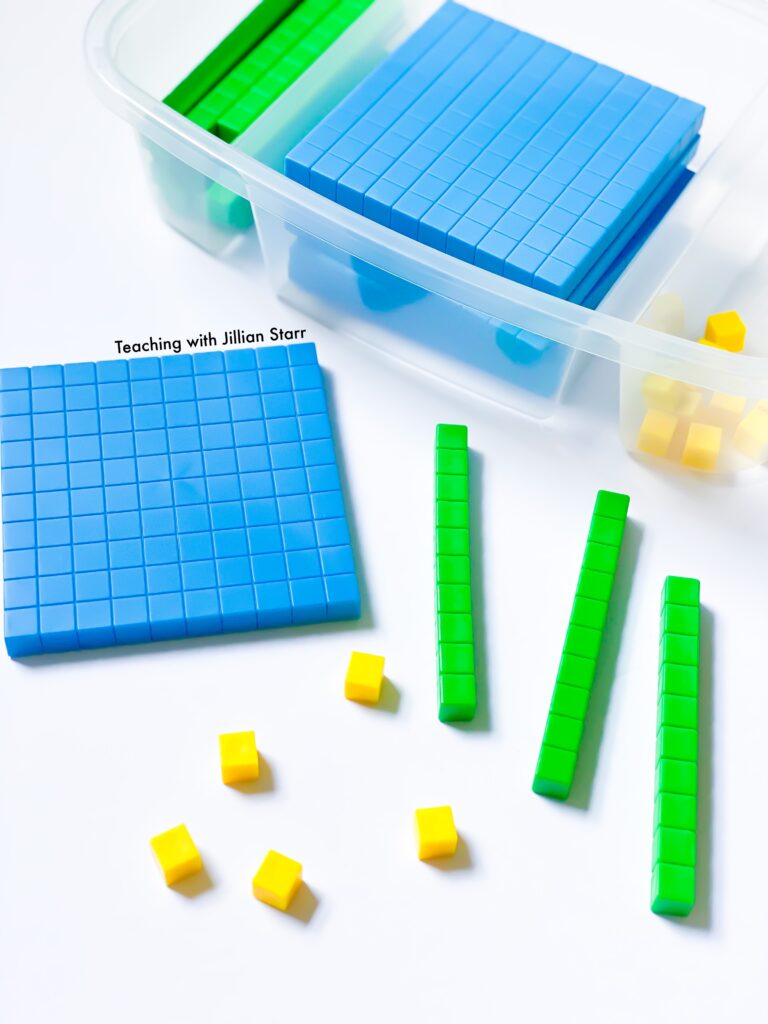
Base ten blocks are a classic math manipulative for a reason. They help students understand regrouping and trading as they work with larger and larger numbers. Students start to see the logic behind each operation with base ten blocks.
I recommend that base ten blocks become the primary math manipulative for place value in third grade. Students are starting to use three-digit numbers, and base ten blocks offer visual differentiation that other third grade math manipulatives simply cannot.
Also, I don’t just use the physical blocks. There is a huge benefit in pictorial representation as well. Using numeral cards with a base ten block visual has helped many of my students go from a concrete understanding of number to a more abstract number sense, opening the door for more complex conversations about place value during our whole group time and number talks.
Fraction Tiles/Circles
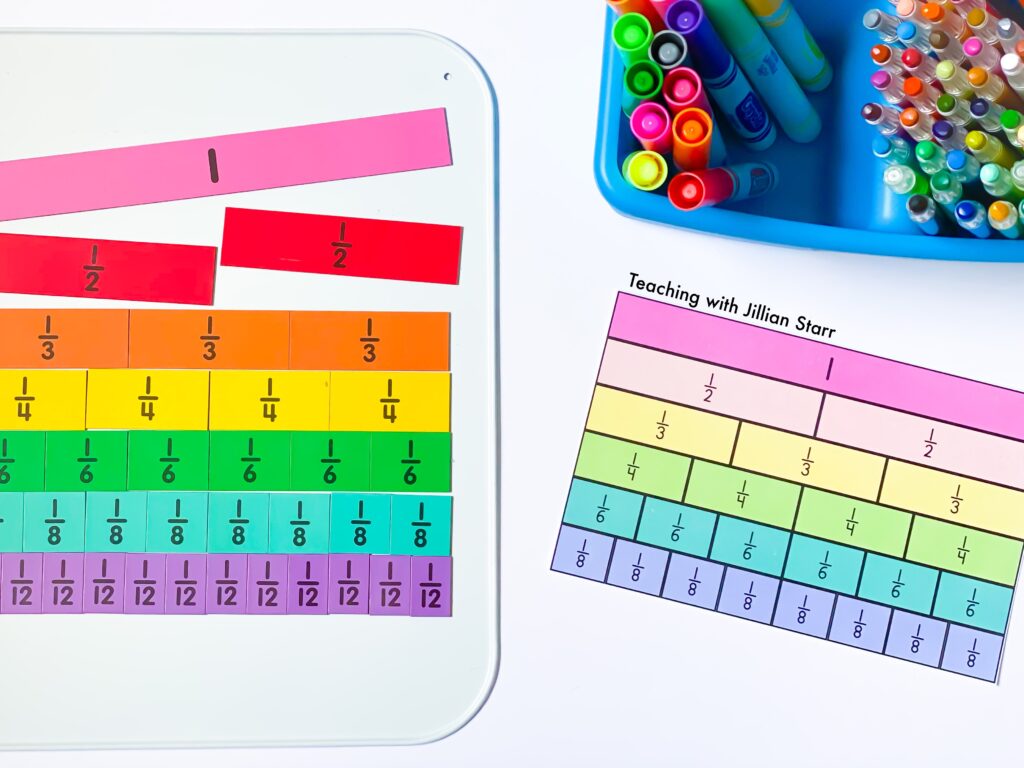
Have you taught fractions to third graders? Every third grade teacher I talk to says the same thing. When it is time for the fractions unit, many students hit a wall. They understand the concept of a half or a quarter. But as students go deeper into the concept of fractions and how they relate to each other, they need more support.
Repeated, visual and hands-on practice is a must. That is where fraction tiles and circles become your best friend. They go beyond pictorial visuals. Students literally piece together a whole! And as you get deeper into your unit, students can put together different combinations of fractions to build a whole. They can see equivalent fractions, piecing them together like a puzzle.
This third grade math manipulative was always a staple in my third grade classroom as we worked through fractions, and the reason so many of my students were successful during our fraction centers.
You can also grab FREE printable fraction tiles here:
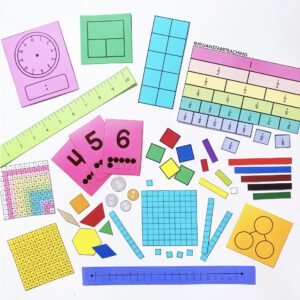
Free Printable Math Manipulatives
Need to keep students supplies separate, but still want them to have access to ALL the math manipulatives? Grab these free printables and problem solved!
Dice, Dice and MORE Dice!


If you’ve taken my Guided Math Academy course know… I LOVE dice (and keeping them organized, of course!). I use dice for everything. And a variety of dice is key. Big dice, 10-sided, 20-sided dice, dice in dice, even blank dice. With all of that variety, they are a staple of my center games and activities.
Want to know my favorite thing about dice? Well, there are two. The first: dice make differentiation so simple. If a student is ready to push their thinking, grab dice with higher numbers! And second: dice make it so much easier to provide activities that are never ending– no more, “I’m done!”. Students can be engaged in constant practice of concepts without immediate teacher input. The dice keep creating new numbers for students to plug in.
Bonus tip: For third grade and up, place value dice are a game-changer. True, you can absolutely use regular dice and roll with a specific value in mind. But that takes a lot of brainwork that isn’t connected to math practice. Place value dice simplify certain activities for kids with attention and executive function struggles (like me!).
I hope this list of my five favorite math manipulatives for third grade helps give you some ideas about how to grow your own math manipulative collections! Do you have a favorite I missed? Share with us!
Loving this post? Check out the other posts in this series for first grade and second grade classrooms.


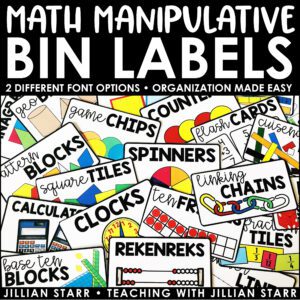

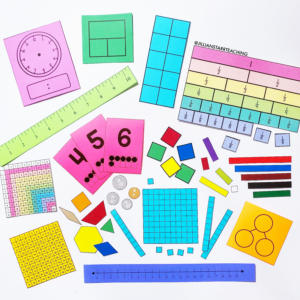
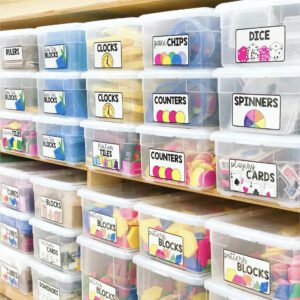
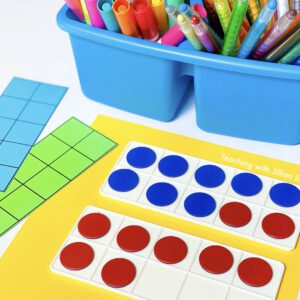
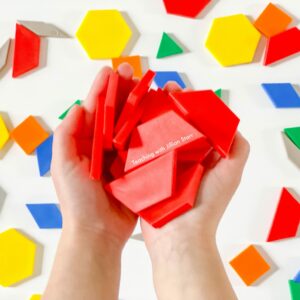


Thanks for sharing these manipulatives! Where did you find the storage container for your base ten blocks??
They’re actually meant for storing lunches (sandwiches and sides). I think I got them at the Dollar Tree a number of years ago, but they should be available in other places too!